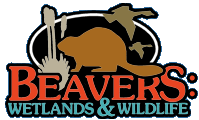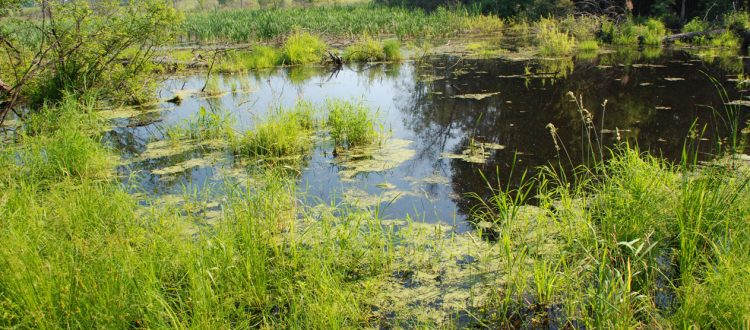Saving Habitats and Lives
Seven Steps to Winning for Wildlife
Delaware Activists’ Plan Saves Beavers and Canada Geese
By Bob Leonard
Read the full article: How Conservation Easements Save Habitats and Lives
After a mid-life reassessment and the death of a close animal companion in 1998, I wanted to do more than just support animal organizations financially. That fall I attended my first meeting of Delaware Action for Animals (DAA). The main topic discussed that night was a proposed change to state regulations that would create an aggressive open season for trapping beavers statewide. The Delaware wildlife agency was planning to greatly expand the current season with no bag limits, and no requirement for a permit – or any after the fact reporting. We called it an “open season.”
I agreed to lead the effort to oppose the open season … a leap of faith, since I had never even seen a beaver. Although the Delaware Action for Animals (DAA) logo included a beaver and the group had a history of successful beaver advocacy, in recent years those with any real beaver knowledge had moved on. Armed only with 20 years of business experience and a strong desire to take my first step into animal activism, I agreed to lead the effort to oppose the open season. The next day I realized this was a leap of faith, since I had no knowledge of the regulatory process and had never even seen a beaver.
The collective efforts of a small group of people over the next year not only stopped the expanded open season on beavers in Delaware but also provided DAA with a blueprint for community wildlife activism that would save many other wild animals in the future. What follows is a description of a process that we stumbled upon during that first beaver campaign and later refined as we faced similar challenges to help other wildlife in Delaware.
Step 1. Assess The Situation/Fight Battles You Can Win
Protecting wildlife almost always means battling a state agency that is acting on behalf of a third party. To find out what is driving new initiatives, we’ve learned to just flat out ask for the real story and we typically get it. In the case of the new beaver season, less than 100 trappers had convinced the state to include this in a major wildlife regulation overhaul. Similarly, when DAA first opposed geese roundups in 1999, we learned that one paranoid state biologist, who was influenced by counterparts in neighboring states, had driven three years of mass exterminations in our state parks.
Because we clearly understood these situations, we entered into both with confidence that we could be successful, and we ultimately were. Conversely, when we have opposed initiatives about prized game species, introduced by the state hunting lobby and supported by powerful politicians and the NRA, we have fought uphill battles that we have almost always lost. Unless simply shining a light on government-sanctioned cruelty to animals is your mission, in situations like these, it may be best to save your energy.
Step 2. Immediately Engage Your Adversaries
State wildlife agencies and their leadership are accustomed to finding time for, and making concessions to, well-connected hunters and trappers. As a tax-paying citizen, or better yet, as a representative of a group, you should settle for nothing less. Formally and politely explain in writing to a person at director level, that you’d like only one hour of their time and provide a vague outline for the discussion. Include a date and time you would like to meet, and what information you would like to receive then, or prior to the meeting. Allow them to suggest an alternate date, and be genuinely appreciative each time they comply with any request.
Step 3. Do Your Homework
Review all pertinent information before you meet. Prior to our first meeting about the beaver season, we reviewed all data in support of their proposal, plus a 125-page federally funded beaver study from a few years earlier. We entered the meeting with a basic understanding of their case and left with a clear idea of how to attack their proposal. Although we could have easily put agency personnel on the spot during that first meeting, we questioned nothing and told them only that there was strong widespread opposition to the proposed season.
Later we learned the population numbers, which state wildlife agencies provide to the public and the media, tend to be inflated, and are rarely based on solid data. Further, all data and non-peer reviewed studies used to support agency positions, are performed within the state wildlife community by staff who strongly support the consumptive use of wildlife. They are comfortable providing this information because they know they will rarely be challenged.
Step 4. Contact Potential Allies
Once we agreed that our strategy would involve challenging the data in support of the open season, we sent a summary of the situation to many other wildlife advocacy groups and included a draft letter of opposition with two different addresses: the Secretary of the Delaware Department of Natural Resources (DNR) and the DNR Director of Fish and Wildlife ╤ to help ensure discussion within the agency.
Much to our delight, five groups sent letters and two premier national wildlife organizations contacted us immediately to offer help. They also helped us appreciate how valuable people within the community could be to our effort. We widely disseminated a clear, concise, statement of our position to all the animal groups and advocates we knew. Besides the obvious allies, we found others who had safety and quality of life concerns. Politicians will oppose anything they are convinced their constituents are against and we found a few of those. When supportive of your cause, newspapers will run multiple op-ed letters and may even write a positive editorial. We were fortunate that the Wilmington News Journal shared our concern for beavers. Once your campaign is over it’s important to recognize and thank people for their support. Sharing in a victory, or even a well-intentioned failure, increases the likelihood they will be there to help the next time.
Step 5. Acquire Tools/Steal shamelessly/Establish and Identity
The advice and encouragement we received from the Humane Society of the United States provided the confidence we needed to charge forward. We attended a Beavers: Wetlands & Wildlife training workshop, where we became full-fledged beaver advocates and began to acquire the tools to remediate human/beaver conflicts. We met many wonderful beaver people at that 1999 conference, including Ruth and Mike Callahan who had recently founded Pioneer Valley Wetland Volunteers. With their help, we proceeded to shamelessly steal all we could from them and soon formed a DAA subgroup named Delaware Wetland Volunteers (DWV).
Step 6. Make Your Case/Offer Alternatives
Having learned about peaceful solutions to beaver conflicts, in the spring of 1999 Delaware Wetland Volunteers (DWV) asked for total access to the state’s beaver complaint files. Much to our amazement, they agreed. After two days of compiling five years of data, and several weeks of talking with complainants, it became clear to us – and then to the agency – that we could prove the beaver problem had been grossly overstated.
Within the same few weeks, we also installed our first flow device, protected trees at two locations, and convinced the state to provide our name to anyone calling with a beaver complaint. Our mission was to stop the state from approving an aggressive beaver season and from bashing beavers in the media to get it approved.
Four of us installed five pipe systems and protected trees at three sites during the first season. This success, along with growing public opposition to the open beaver season convinced the agency to withdraw the proposed beaver regulations. The next year we had about five sites, and last year we had only one problem site.
Our “Geese Peace in Delaware” initiative followed the same model and we interacted with the same allies and adversaries to establish a federally permitted, statewide, resident Canada goose population control program. Over six years, this program reduced nuisance goose populations and saved thousands of resident Canada geese from the gas chamber.
Step 7. Stay Committed
What we did in 1999 established a recognized voice for beavers in Delaware, and we kept a high profile for the first three years. After we began addressing the resident Canada goose issue, we continued to discuss beavers with the state in regular meetings and give presentations once or twice a year at wildlife agency meetings. They know we will go to the wall to protect beavers, small animals in state parks and resident Canada geese.
If DAA had built on the victories it won for beavers in the early 1990s, we would not have had to do it again as the decade closed. Although our beaver work has been limited recently, our group continues to be a visible and vocal advocate. Today our priorities are maintaining relationships with state agencies, checking existing sites, and immediately becoming involved
Beaversprite Winter 2006

